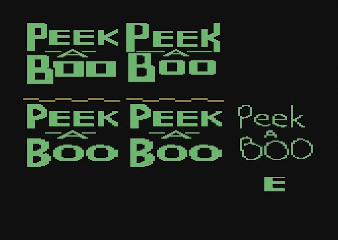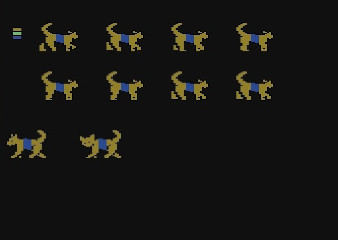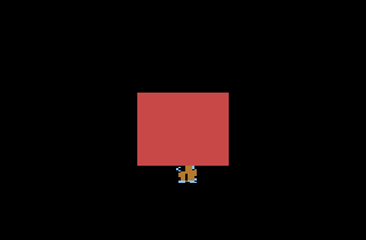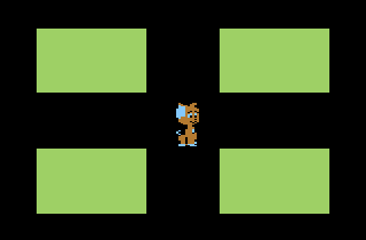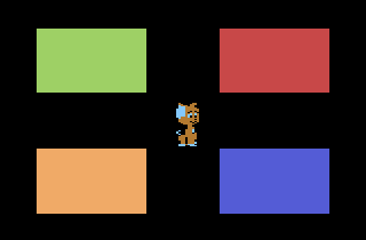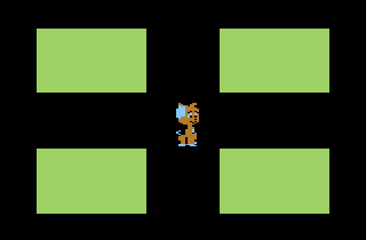|
|
Peek-A-Boo
|
Name:
|
Peek-A-Boo |
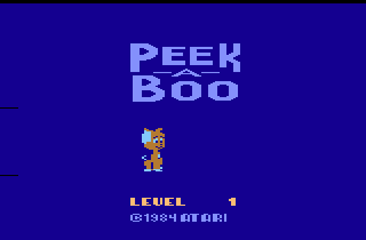 |
| Company: | Atari | |
|
Model #:
|
CX-26135 | |
|
Programmer:
|
Kevin Sacher
(Programmer) & Jerome Domurat (Graphics) |
|
| Year: | 1984 | |
|
Released?
|
No
|
|
|
Notes:
|
Developed in conjunction with child psychologist Dr. Lee Salk (1926-1992). |
According to Atari, Peek-A-Boo was to be a revolutionary new video activity based on the familiar concepts of Peek-a-Boo and Hide 'n' Seek. It was supposed to teach important concepts such as spatial orientation, direction, and memory that build a child's self-esteem and teach them to have fun on the 2600. Yeah and I play Missile Command to help my hand-eye coordination...
Since Peek-A-Boo was intended for very young children the gameplay is very simple. The main character of this game (a cat named Smart Seymour) moves in and out from behind a square. Depending on the game selected the various elements of the game change slightly. The square may be a single block, a rectangle, or four colored squares. The cat may move far away from the square, or he may barely move half his body out. The cat may move rapidly in and out from behind the square, or he may stay behind the square. There are eight different types of games, each with a slightly different objective.
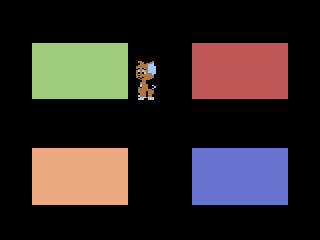
Before starting the game, the first thing you must do is turn the kids controller sideways to the left (so the top row read 3 6 9 #, middle row reads 2 5 8 0, and bottom row reads 1 4 7 *). Once you have your controller in the proper position, you can actually attempt to play the game. As mentioned above, there are eight different games:
Game 1: Single Block
This is the easiest of all the games. All of the buttons
work to move Seymour behind the block or out from behind it in
various directions.
Game 2: Horizontal Bar
In this game the top row of buttons (3 6 9 #) moves Seymour
up, the bottom row (1 4 7 *) moves Seymour down, and the middle
row (2 5 8 0) gives you an error sound. As with all the
other game variations, all of the buttons work to move Seymour
behind the line.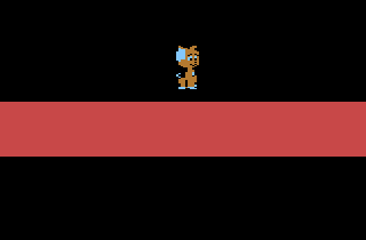
Game 3: Vertical Bar
In this game buttons 1 2 3 4 5 6 move Seymour to the left while
buttons 7 8 9 * 0 # move him to the right.
Game 4: Single Block
In this game buttons 6 and 9 move Seymour up, 4 and 7 move him down, 1 2 3 moves him left, and * 0 # moves him right. Buttons 5 and 8 give the error sound.
Game 5: Four Blocks
In this game you have to press the right buttons depending on
which block Seymour is behind. Buttons 3 and 6 move him from
behind the top left block, 9 and # move him from behind the top
right block, 1 and 4 move him from behind the bottom left block,
and 7 and * move him from behind bottom right block. All of
the middle buttons 2580 give the error sound.
Game 6: Four Colored Blocks
In this game the buttons are assigned different colors that
correspond to the colored blocks. Buttons 1 2 3 moves
Seymour from behind the green block, 456 for the red block, 7 8 9
for the tan block, and 0 * # moves Seymour from behind the blue
block.
Games 7 & 8: 4 Blocks/4 Colored Blocks
These last two games are a bit of a mystery. Hitting any button moves Seymour in various directions and only the two middle buttons (5 and 8) give the error sound when moving him out from behind the blocks. Perhaps these games aren't finished or you need the mind of a child to understand them (you'd think I'd be qualified for that).
Recently a disk containing a mockups of the
title screen logo and Seymour were discovered hidden on a disk
from former Atari graphics artist Jerome Domurat. You can
see how Jerome was playing with slightly different styles for
the title (including a radically different cursive style), but
the really interesting part are the graphics for Seymour.
It would appear that Atari was originally considering using a
realistic looking cat instead of the cartoon version they ended
up with. Special thanks to John Hardie and the National
Videogame Museum for finding this disk and releasing it to the
public.
